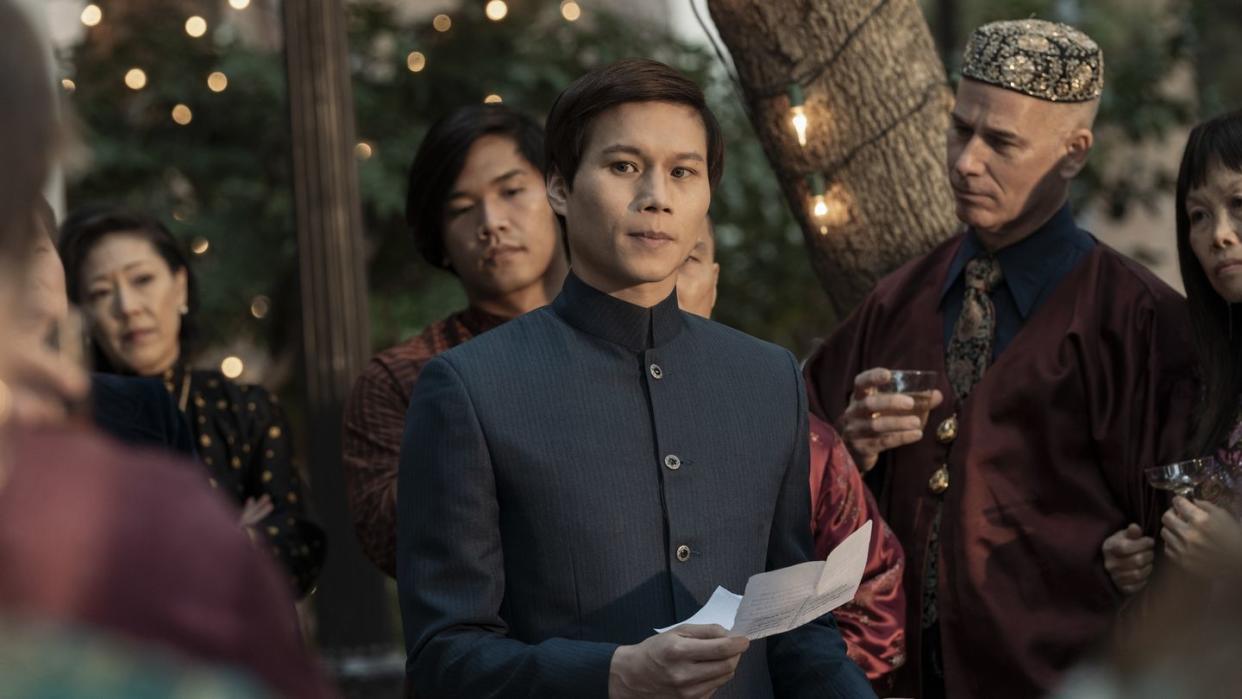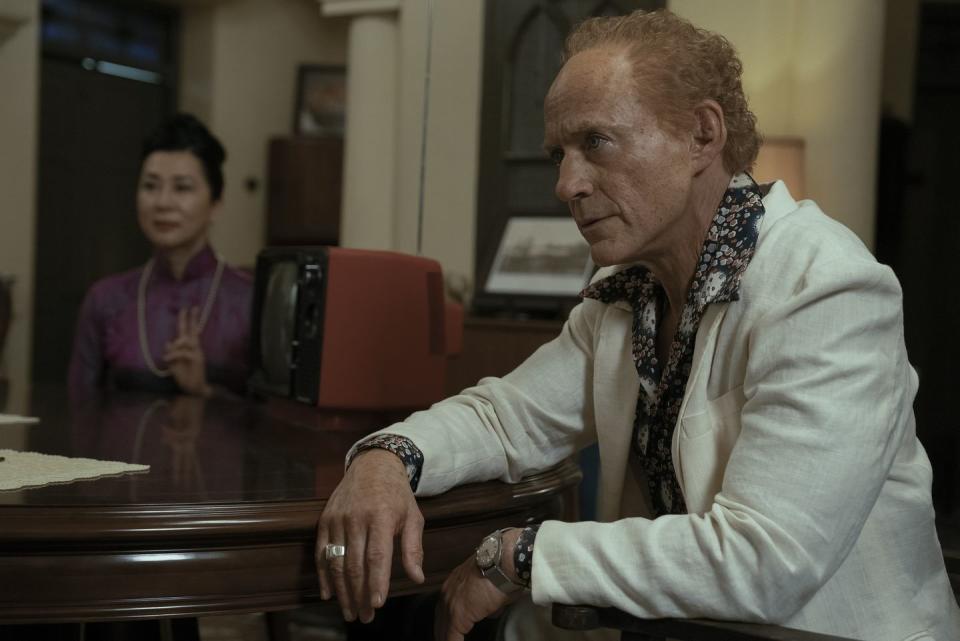How ‘The Sympathizer’ Remembers the Fall of Saigon

- Oops!Something went wrong.Please try again later.
- Oops!Something went wrong.Please try again later.
"Hearst Magazines and Yahoo may earn commission or revenue on some items through these links."
War doesn't end when the bloodshed stops. As The Sympathizer reminds viewers in its opening scene, "All wars are fought twice. The first time on the battlefield. The second time in memory." HBO's latest drama follows this philosophy. Much of The Sympathizer takes place after the Fall of Saigon in 1975, which marked the end of the Vietnam War in the American consciousness. For Vietnam, the conflict carried on.
In an effort to rewrite decades of American propaganda, author Viet Thanh Nguyen chose to begin The Sympathizer at the Fall of Saigon. But starting at the end of a story—which is technically the middle of this story— clearly presents its challenges. "The long middle of a story is the hardest part for me as a writer," Nguyen wrote in Esquire this past January. "The beginning, far in the past. The ending—I don’t know. But what I do know is that it is good for a writer to be unaware of the conclusion. If the end startles the writer, it likely will surprise the reader, too."
To shepherd viewers to that shocking conclusion, The Sympathizer must first bring audiences up to speed. In the premiere episode, we're introduced to the Captain (Hoa Xuande), a North Vietnamese spy embedded in the South Vietnamese military. We also meet Claude (Robert Downey Jr.), the CIA agent whom our main character reports to during his undercover duties in South Vietnam. Through the Captain's espionage, the viewer is able to witness both perspectives of the war. As he narrates in the first episode, "I was cursed to see every issue from both sides."

In America, the image of the Vietnam War is shrouded in domestic counter-culture movements. But from a Vietnamese perspective, America was a third party in the midst of a civil war. On one side, in the South, the Republic of Vietnam received training from the United States. Their shared goal was to rid the country of communism. Following a CIA-backed assassination of the former president, Ngo Dinh Diem, the more sympathetic General Nguyen Van Thieu won a rigged election in 1967. The group suffered heavy losses—and Thieu's time in office was characterized by corruption and significantly low support. When the North conquered Saigon in 1975, Thieu had already resigned and fled to Taipei. Most likely, General Thieu served as inspiration for The Sympathizer's unnamed General (played by Toan Le). In the premiere, the General and the Captain flee Saigon to come to Los Angeles.
In the North, the communist revolutionary Ho Chi Minh led the People's Army of Vietnam. Unlike Thieu in the South, "Uncle Ho" was immensely popular. He led the August Revolution in 1945 to rout the Japanese, establishing the independent Democratic Republic of Vietnam. He also defeated the French with guerrilla warfare in the First Indochina War, which resulted in the official split between the North and the South in Vietnam. Though Minh died before the Fall of Saigon in 1975, the People's Army was victorious. The North succeeded in uniting Vietnam in 1976, and Saigon was renamed Ho Chi Minh City.

For the Americans, who pulled their troops out of Vietnam just a few years prior, the Fall of Saigon marked the theoretical end of the Vietnam War. But for Vietnam, the worst of it was just beginning. After the Fall, many South Vietnamese were sent to "re-education camps," where they endured punishing labor and starvation. Among them was four-year-old Viet Thanh Nguyen, who would later pen The Sympathizer.
Though Nguyen's story takes place in America, conditions only worsened back in Vietnam. For many, the People's Army represented freedom from foreign influence. Sadly, the first few years of communist rule resulted in roughly 1.4 million refugees, according to The New York Times. Prominent political figures, journalists, and activists, were tortured and executed in the re-education camps, The country experienced poverty, famine, and a suppression of free speech that still exists today.
Through the Captain, The Sympathizer seeks to detail how all sides suffered from the war. As an operative for the North and an undercover spy in the South, he experiences the worst of both sides. In the end, he's captured by his own people. The situation is teased in the opening scene of The Sympathizer's premiere, when a North Vietnamese prison guard orders the Captain to write down the details of his mission abroad. As the HBO drama plays out over the next few weeks, audiences will see just how his story plays out.
You Might Also Like

